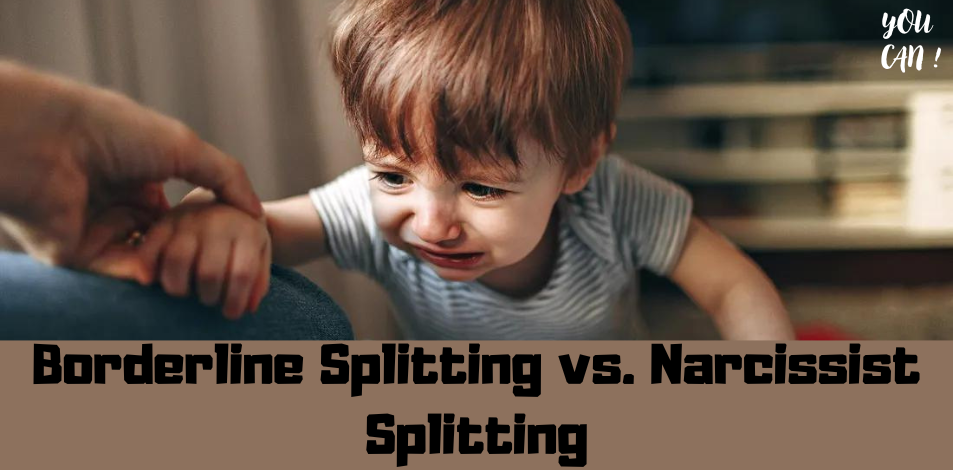
“Splitting” is a defense mechanism that is often seen in both borderline personality disorder and narcissistic personality disorder, but it manifests differently in each. Here’s a comparison of how splitting occurs in these two disorders:
BorderlineSplitting
Definition and Characteristics:
All-or-nothing thinking: Individuals with borderline personality disorder often view people and situations in black-and-white terms. A person is either all good or all bad, with no middle ground.
Related : Are Narcissists and Borderlines Two Sides of the Same Coin?
Rapid shifts: Their perceptions can change quickly based on interactions and emotions. A person who is seen as perfect one moment can be seen as worthless the next.
Emotional instability: Splitting in borderline personality disorder is closely linked to emotional volatility. Intense emotions drive shifting perceptions.
Fear of abandonment: Fear of abandonment or rejection often leads to splitting. When they feel threatened, they may idealize or devalue others as a coping mechanism.
Impact on Relationships:
Intense and unstable relationships: Relationships are often characterized by extreme fluctuations between idealization and devaluation.
Recurring conflicts: The tendency to split can lead to frequent misunderstandings and conflicts in relationships.
Conflict with trust: Maintaining stable, trusting relationships is difficult due to constant changes in how others perceive you.
Narcissistic Splitting
Definition and Characteristics:
Idealization and devaluation: Narcissists also engage in splitting, but this helps them maintain their grandiose self-image. They idealize people who boost their self-esteem and devalue those who don’t.
Protecting self-image: Splitting helps narcissists protect themselves from feelings of inadequacy or failure. By devaluing others, they avoid confronting their weaknesses.
Control and manipulation: Splitting can be used as a tool to control and manipulate others. Idealizing someone can make that person feel special while devaluing them can undermine their self-esteem.
Entitlement and Superiority: The narcissist’s split often reflects their sense of entitlement and superiority. Those who meet their needs are seen as worthy; those who challenge them are seen as worthless.
Impact on Relationships:
Exploitative Relationships: Relationships are often exploitative, with the narcissist using others to boost their self-esteem.
Lack of Empathy: The inability to empathize with the feelings of others contributes to a callous devaluation when someone is no longer seen as useful or admired.
Superficial Connections: Relationships tend to be superficial and transactional, based on what the narcissist can gain from the other person.
Key Differences
Emotional Motivations: In borderline personality disorder, splitting is driven by extreme emotional ups and downs and a fear of abandonment. In BPD, it is driven by the need to maintain a grandiose self-image and avoid feelings of inadequacy.
Related : How Many Sexual Partners Will the Average Narcissist Have?
Relationship Dynamics: The split in borderline personality disorder results in unstable and turbulent relationships characterized by rapid shifts between idealization and devaluation. The split in borderline personality disorder results in exploitative relationships where people are valued based on their usefulness to the narcissist’s self-esteem.
Defense Mechanisms: Individuals with borderline personality disorder use splitting as a way to cope with overwhelming emotions and fear of loss. Narcissists use it to defend against threats to their self-esteem and control of their environment.
Understanding these differences is critical to effective treatment and support. Treatment approaches for borderline personality disorder may focus on emotional regulation and building stable relationships, while treatment approaches for narcissistic personality disorder may address issues of self-esteem and developing empathy.




